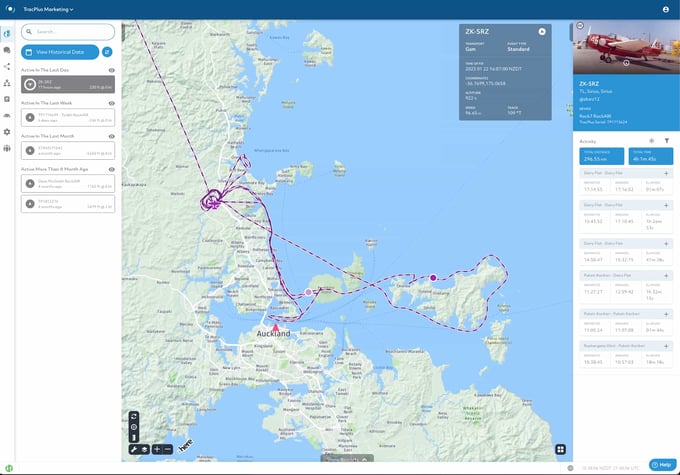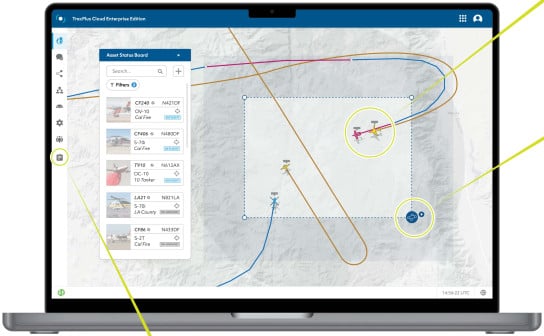Wildfires are significant natural disasters that require an immediate and effective response to minimize their impact on lives and property. A Common Operating Picture (COP) is a tool that plays a vital role in managing wildfire response operations.
In this article, we will discuss what a Common Operating Picture is, how it works, and its importance in wildfire response operations.
Table of contents:
- Introduction
- What is a Common Operating Picture?
- How Does a Common Operating Picture Work?
- Importance of Common Operating Picture in Wildfire Response Operations
- Challenges and Limitations of Common Operating Picture in Wildfire Response Operations
- Best Practices for Implementing a Common Operating Picture
- Conclusion
- FAQs
1. Introduction
Wildfires have devastating consequences, causing loss of lives, property damage, and environmental degradation. The response to wildfires requires coordinated efforts of multiple agencies, including federal, state, and local authorities. The success of these efforts depends on how efficiently they can collaborate, communicate, share data, and make decisions. A Common Operating Picture (COP) is a tool that provides a unified view of the incident to all the responding agencies, enabling them to work collaboratively and effectively.
2. What is a Common Operating Picture?
A Common Operating Picture (COP) is a real-time, shared understanding of the incident that all responding agencies use to support decision-making and communication. It is a graphical representation of the incident and surrounding operations, which includes data on asset location, weather conditions, topography, and resources deployed. The COP provides a common platform for agencies and responders to exchange information, ensuring that they have a shared situational awareness of the incident.

Example of what the TracPlus Cloud 'Common Operating Picture' looks like while tracking the flight path of an airplane
3. How Does a Common Operating Picture Work?
The COP works by integrating various data sources into a single platform, which can be accessed by all responding agencies. The data sources include geographic information systems (GIS), real-time weather data, satellite imagery, and data collected by hardware tracking devices. The data is analyzed and presented on a graphical interface, providing a visual representation of the operation. Responders can access the COP through desktops, laptops, or mobile devices, allowing them to make informed decisions on the go.
4. Importance of a Common Operating Picture in Wildfire Response Operations
The COP is a critical tool in managing wildfire response operations. Here are some of the ways in which it benefits response efforts:
- Enhanced Situational Awareness
The COP provides a real-time, shared understanding of the incident and operations, ensuring that all responders have a common understanding of the situation. This helps in identifying the current and potential risks, assessing the impact of the incident, and making informed decisions going forward.
- Efficient Resource Management
The COP allows responders to track the location and status of resources, such as fire trucks, aerial fire helicopters, fixed-wing aerial firefighting planes, and personnel. This helps in the efficient deployment of resources to areas of greatest need, minimizing response time and reducing the impact of the incident.
The COP provides responders with accurate, up-to-date information, enabling them to make informed decisions. The data is presented in a graphical format, making it easier to understand and interpret. This helps in developing effective response strategies and tactics. A COP can store historic data on past missions, and operators can download this in a CSV format and analyze it for better decision-making in future missions.
- Effective Coordination and Communication
The COP facilitates effective coordination and communication between responding agencies. It provides a common platform for all responders to access and exchange information, ensuring that they are all working towards the same mission goals. This improves communication, reduces duplication of efforts, and minimizes the risk of miscommunication.
The COP enhances the safety of responders by providing real-time information on the assets responding to the incident. If an emergency were to take place, teams would know exactly where to go to assist those in need, due to the real-time asset tracking data feeds being shared. It allows responders to identify and respond to potential hazards, ensuring that they are not exposed to unnecessary risks. The COP also helps in identifying areas that require evacuation, ensuring that responders and the public are kept safe.
5. Challenges and Limitations of Common Operating Picture in Wildfire Response Operations
While the COP is an essential tool in managing wildfire response operations, it has some limitations and challenges. Some of these include:
- The need for specialized training to use the COP effectively
- The cost of implementing a COP system
- The need for a reliable and robust communication network
- The challenge of integrating data from various sources into a single platform and limited access to data due to the lack of interoperability between different systems (this can be overcome by using system-agnostic platforms like TracPlus Cloud).
6. Best Practices for Developing and Implementing a Common Operating Picture
Developing and implementing a COP system requires careful planning and execution. Here are some best practices to consider:
- Define Objectives and Requirements
The first step in developing a COP is to define the objectives and requirements. This involves identifying the needs of the responding agencies and the information required to manage the incident effectively.
- Select the Right Tools and Technologies
Selecting the right tools and technologies is essential in developing an effective COP. This involves identifying the appropriate software, hardware, and communication systems required to meet the objectives and requirements.
Proper training is critical in ensuring that personnel can use the COP effectively. This involves providing training on how to access and use the system, interpreting the data presented, and making informed decisions based on the information available.
- Establish Standard Operating Procedures (SOPs)
Standard Operating Procedures (SOPs) are critical in ensuring that response efforts are coordinated and effective. This involves developing SOPs for using the COP, sharing information, and responding to the incident.
- Test and Evaluate the COP Regularly
Regular testing and evaluation of the COP are critical in ensuring that it remains effective and up-to-date. This involves testing the system in different scenarios, evaluating its effectiveness, and making necessary adjustments.
Conclusion
The Common Operating Picture (COP) is a critical tool in managing wildfire response operations. It provides a real-time, shared understanding of the incident, enabling responding agencies to work collaboratively and effectively. The COP facilitates enhanced situational awareness, efficient resource management, improved decision-making, effective coordination and communication, and increased safety. Implementing an effective COP requires careful planning, selecting the appropriate tools and technologies, proper training, establishing SOPs, and regular testing and evaluation. While there are some challenges and limitations associated with the COP, these can be mitigated through careful planning and execution.
FAQs
1. What is a Common Operating Picture (COP)?
A Common Operating Picture (COP) is a tool used in emergency management and response operations that provides a real-time, shared understanding of the incident through data reporting.
2. Why is a COP important in managing wildfires?
A COP is important in managing wildfires as it facilitates enhanced situational awareness, efficient resource management, improved decision-making, effective coordination and communication, and increased safety.
3. What are the essential components of a COP for wildfire response operations?
The essential components of a COP for wildfire response operations include Geographic Information Systems (GIS), real-time tracking and communication systems, and data collection and analysis tools.
4. What are the challenges and limitations of a COP in wildfire response operations?
The challenges and limitations of a COP in wildfire response operations include the need for specialized training, the cost of implementation, the need for a reliable communication network, and the challenge of integrating data from various sources.
5. What are some best practices for implementing a COP?
Best practices for developing and implementing a COP include defining objectives and requirements, selecting the right tools and technologies, training personnel, establishing standard operating procedures, and regularly testing and evaluating the system.
Want to make sure you’re investing in a reliable common operating platform that best fits your needs? Talk to our team today - we’re always happy to help out.

